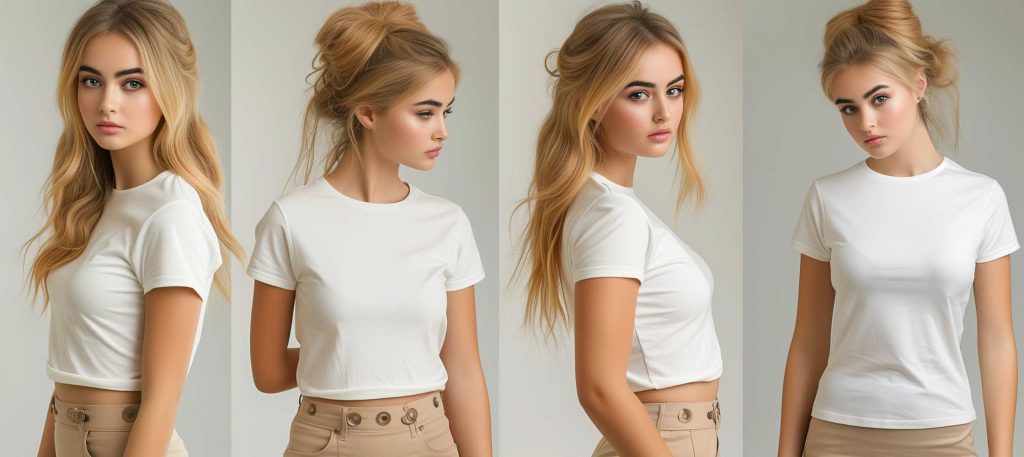|
Getting your Trinity Audio player ready...
|

In today’s digital age, where photographs often become the mainstay of our social identities, the concern “Why do I look fat in pictures?” has become increasingly common. This blog post delves into the various factors contributing to this phenomenon, backed by recent research and expert insights, to offer a comprehensive understanding and practical solutions.
Introduction
Have you ever looked at a photo of yourself and wondered, “Why do I look fat in pictures when I don’t feel that way in the mirror?” This question is far from unusual in our image-conscious society. A blend of psychological, technical, and practical reasons can explain this discrepancy, influencing our self-perception and the outcome of photographs. This blog aims to unpack these reasons, providing fresh perspectives and actionable advice to help you look your best in photos.
Psychological Aspects
Our brains process images in a mirror differently than photos, automatically correcting any distortions in the reflection. This adjustment doesn’t occur with photographs, which can lead to perceptions of looking different or larger than we actually are.
This phenomenon is further compounded by the fixed nature of photographs, which capture us from specific angles and moments in time, unlike the dynamic, three-dimensional view we get in the mirror.
Technical Explanations
Lens Distortion and Camera Angles
The type of lens and the angle at which a photo is taken can greatly affect how our bodies appear. Wide-angle lenses, commonly found in phone cameras, can distort images, making objects closer to the lens appear larger. This distortion is particularly unflattering for selfies, where features like the nose or forehead might be disproportionately enlarged.
Lighting Effects
Lighting plays a crucial role in photography and can drastically alter our appearance in photos. Dramatic lighting and shadows can emphasize certain body parts, making them appear larger or more pronounced than they are. Optimal lighting, such as a key light positioned at a 15 to 70-degree angle in front of the subject, can enhance features and contribute to a more flattering photograph.
Posture and Clothing
How you stand, sit, or pose in a photo can also impact how your body is perceived. Slouching or hunching can make the stomach area appear wider, whereas standing up straight with shoulders back can create a more elongated body silhouette. Similarly, clothing choices play a significant role. Baggy clothes can make you appear larger, while fitted clothing can accentuate your shape more flatteringly.
The Role of Posture and Clothing
Our body language and attire play significant roles in how we’re captured in photographs. Here’s how:
- Posture: Standing or sitting with confidence does more than boost your self-esteem; it physically alters your appearance in photos. A straight posture elongates the body, making you appear taller and slimmer. Conversely, slouching can make your body appear condensed and wider.
- Clothing: What we wear in photos can drastically affect how our body shape is perceived. The right outfit can accentuate your best features and conceal those you’re less fond of. Here are a few pointers:
Social Media and Filters
The influence of social media on our body image cannot be overstated. Constant exposure to edited and filtered images creates unrealistic beauty standards, leading to dissatisfaction with our own unedited appearances. Here’s what to keep in mind:
- Unrealistic Standards: Many social media images are heavily edited, showcasing unattainable levels of perfection. This comparison can distort our self-image and expectations.
- The Filter Effect: Filters can enhance photographs, making them more aesthetically pleasing, but they also contribute to unrealistic expectations about how we should look in real life. It’s important to differentiate between the filtered fantasy and reality.
Practical Tips and Solutions
To mitigate the feeling of looking “fat” in photos, consider these practical tips:
- Better Photography Practices:
- Posing Techniques:
- Stand with one foot in front of the other and shift your weight to the back foot to create a more dynamic and slimming effect.
- Try turning slightly to the side instead of facing the camera head-on to give your body a more slender line.
- Remember to relax your shoulders and elongate your neck for a graceful posture.
- Embrace Self-Love: Cultivating a positive body image is about focusing on what you appreciate about yourself. Practice self-care and surround yourself with positivity. Remember, confidence shines through in photographs.
The Bottom Line
Understanding why we might look “fat” in pictures involves a combination of psychological, technical, and practical considerations. By recognizing the impact of factors such as lens distortion, lighting, posture, clothing choices, and the influence of social media, we can take steps to feel more confident and satisfied with our photographed selves.
Incorporate the practical tips provided, from adopting more flattering photography practices to choosing the right outfit and embracing a positive self-image. Remember, the goal isn’t to meet unrealistic beauty standards but to feel good about the unique individuals we are, both in pictures and in life.
- Unlocking Els Pet: A Comprehensive Guide For New Purchasers - August 9, 2024
- Laser Hair Removal Costs in the US – Complete Guide - April 13, 2024
- Quinoa for Weight Loss – Effective Tips & Healthy Recipes - April 1, 2024
